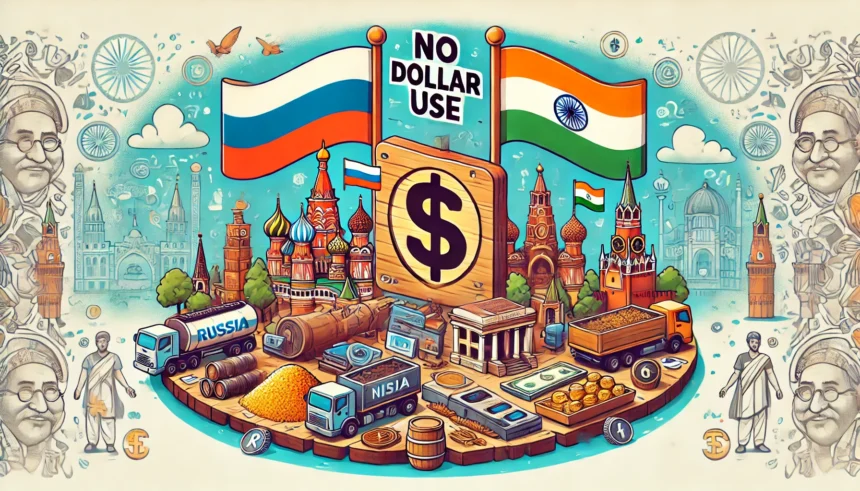
- Russia and India now conduct nearly 90% of direct transactions in national currencies, strengthening financial ties and reducing reliance on the U.S. dollar.
- India-Russia trade surged 8.6% to $64.5 billion in 2024, with Russia ranking as India’s second-largest supplier, trailing only China.
A major shift in global trade is unfolding as two members of BRICS nations, Russia and India, move away from the U.S. dollar in their financial dealings. Nearly 90% of direct transactions between the two countries now occur in their respective national currencies, marking a significant leap in economic cooperation.
Russian Ambassador to India Denis Alipov confirmed deeper financial integration. Speaking to Tass, he highlighted the stability of mutual payments, emphasizing that national currencies now account for nearly all direct transactions.
The settlement in national currencies between the two countries is stable, and currently, about 90% of direct transactions are conducted in national currencies,
With the increasing use of the Russian ruble and the Indian rupee, discussions are also underway regarding the mutual recognition of Russia’s Mir and India’s RuPay payment systems. If implemented, this could make cross-border transactions smoother and further deepen financial ties.
Moscow Strengthens Grip as India’s No. 2 Supplier
Economic cooperation between Moscow and New Delhi is advancing steadily. Indian data indicate an 8.6% rise in bilateral trade over the first 11 months of 2024, totaling $64.5 billion.
Alipov highlighted Russia’s expanding role as a major supplier to India. Russian exports climbed 7.7% to $60 billion, while Indian shipments surged 23.3% to $4.5 billion. Russia now ranks among India’s top four trade partners and holds second place in product supply volume, trailing only China.
“Russia is India’s fourth-largest trading partner and the second-largest supplier by volume, following China,” he said.
A growing shift toward national currencies in trade reflects a global push for de-dollarization. Many economies, especially within BRICS, are adopting alternative financial mechanisms to reduce dependence on Western financial systems and mitigate economic risks.
Trump Threatens 100% Tariffs on BRICS Imports
Donald Trump warned of strong U.S. retaliation against BRICS nations planning a shared currency. He dismissed any possibility of BRICS replacing the U.S. dollar in global trade and cautioned that countries pursuing such efforts would lose access to American markets.
He further vowed to impose a 100% tariff on imports from BRICS members unless they abandoned plans for an alternative currency. Unless they pledged not to create a new financial system that challenges the U.S. dollar’s dominance, the proposed tariff would apply to all BRICS nations.
There is no chance that the BRICS will replace the U.S. Dollar in International Trade, and any Country that tries should wave goodbye to America,
His statements reflect Washington’s growing unease, yet global economic patterns indicate an ongoing shift toward regional financial independence. Russia has become India’s second-largest supplier after China, signaling a tangible move away from dollar reliance in international trade.





